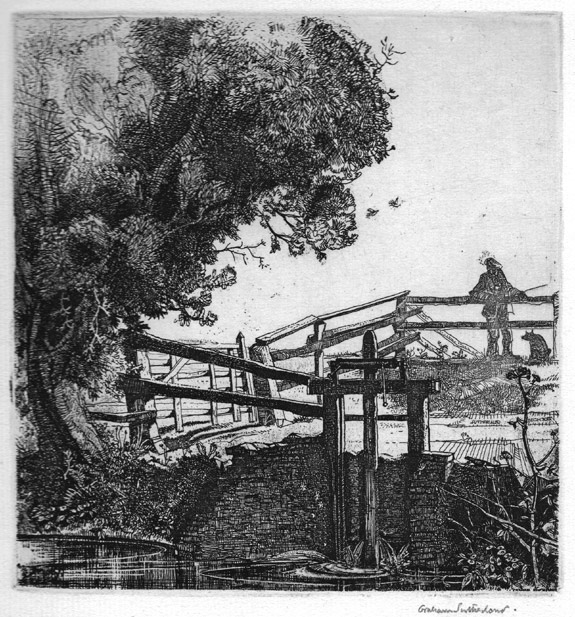|
GRAHAM SUTHERLAND
(London 1903 – 1980 Trottiscliffe, Kent)
The Sluice Gate

The Sluice Gate
Ref: Walker 14, Man 15, Tassi 10, Cooke 16 iv/iv
138 x 135 mm
Etching, 1924.
Published state.
Edition of about 62.
£3500
To view a higher resolution version of this print, please click this link: The Sluice Gate
|
|
Additional
Information about the Print
As an etching student at the Goldsmiths’ School, University of London,
in the early to middle 1920’s, at the height of the British etching ‘boom’,
Sutherland was open to many influences, including Dürer, Rembrandt (as here),
Whistler and Samuel Palmer, before changing direction entirely and effectively
giving up etching in 1931.
Etching is one of the oldest intaglio processes, used by artists from the 16th century.
It was particularly popular in the 17th century, less so in the 18th but revived
enthusiastically in the 19th century, and was the defining technique of the Modern British
Etching Boom of the early decades of the 20th century.
In etching the lines are bitten with acid, rather than scored directly into the copper plate.
The artist covers his plate with a waxy coating called the ‘ground’ and in ‘drawing’
(scratching or ‘needling’) his design into the ‘ground’, selectively exposes the copper.
The plate is put into acid which cuts (eats/etches) into the copper where it is exposed.
The plate is printed under great pressure, the bed of the press being ‘wound’
beneath the rollers of a mangle-like press so that the dampened paper is squeezed
into the grooves to take the ink.
The resulting printed etched line has a flowing fluidity and is clear and sharp.
For more information, and further examples of etchings and Intaglio forms of printmaking, please explore the Etching pages in the Techniques section of this website.
|